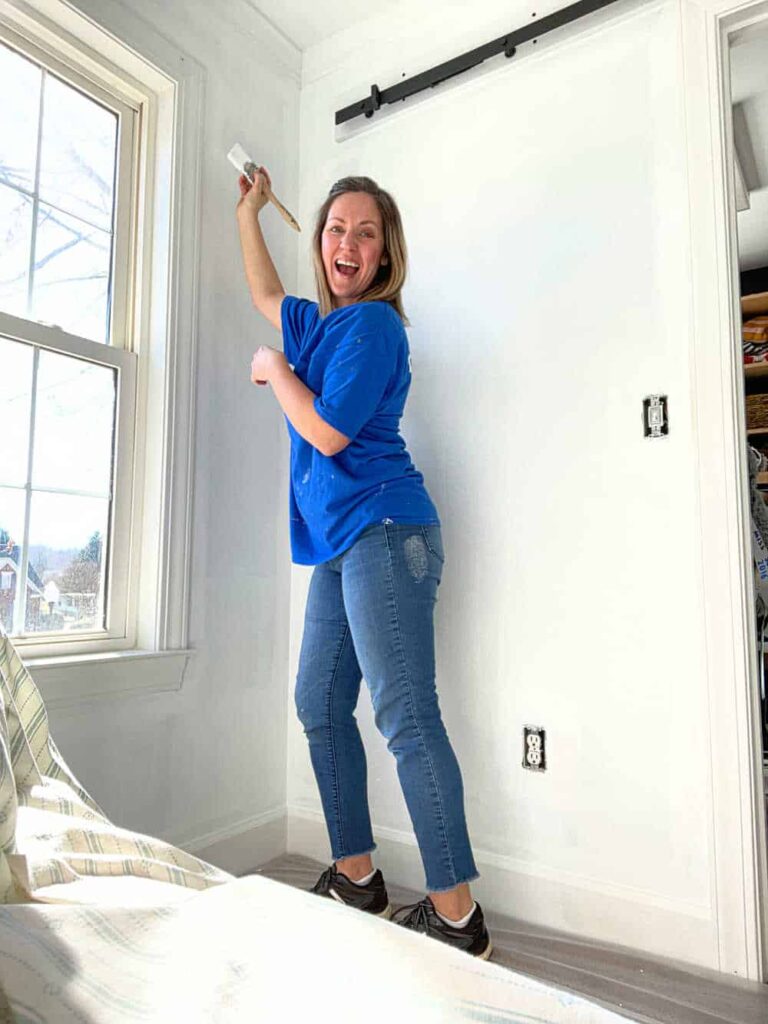How to Paint Your Room: Easy Steps to Painting Walls Like A Pro
Knowing how to properly paint a room is a valuable skill for everyone—from first-time DIYers and new homeowners to seasoned home improvement enthusiasts. It’s a straightforward project, generally affordable, and easy to correct if you make a mistake. But before you dip that roller into paint, having a clear game plan is key. That’s why we reached out to a few experts to share their top tips and techniques. Keep reading for a step-by-step guide to ensure your painting project turns out just the way you envisioned.

1. Plan Your Approach
Begin by envisioning the final look of your space. Remember, you’re not limited to painting all four walls the same color. Think about adding personality with a bold accent wall or enhancing architectural details like moldings with a contrasting shade or finish. And don’t overlook the ceiling—it might be the perfect opportunity for a subtle refresh or a creative touch.

2. Choose Your Color
Picking the right paint color can feel overwhelming with so many options out there. Start by narrowing it down: do you prefer warm or cool tones? Are you leaning toward neutrals or something more vibrant? Take into account your existing furniture, decor, and artwork to ensure your chosen shade complements the space. Once you have a direction, select a few contenders and order samples. Many modern paint brands—like Backdrop and Clare—offer peel-and-stick swatches you can easily apply to your wall. This makes it simple to see how each color looks throughout the day in different lighting, helping you make a confident choice.

3. Pick Out Your Tools and Materials
Before you start painting, gather all the tools and supplies you’ll need. While some items may vary depending on the paint type and the condition of your walls, there are a few essentials every project requires:
- Paint
- Paint rollers
- Extension pole for rollers
- Drop cloths
- Paintbrushes (angled and flat)
- Paint tray
- Sandpaper
- Painter’s tape
- Rags or cloths for cleanup
- Putty knife for patching
Having everything ready ahead of time will help your project run smoothly and save you unnecessary trips to the store.

4. Choose Your Painting Technique
With your paint mixed and tools ready, it’s important to plan your approach before you begin. Start at the top of the room and work your way down—beginning with the ceiling, then moving to the walls. If you’re creating a bold accent wall, paint the adjacent lighter-colored walls first. Don’t worry about stray paint on the accent wall; darker colors will easily cover any light overspray. Once the lighter walls are dry, tape off the edges to prevent the darker paint from bleeding over. If you’re painting over a dark wall with a lighter shade, be prepared for multiple coats: one coat of primer followed by two coats of your new color to fully block out the original hue.

5. Clean Up
After completing your final coat, it’s time to tidy up. Carefully remove painter’s tape while the paint is still slightly tacky to avoid peeling. Pick up drop cloths only once any drips or splatters have dried to prevent smearing. Clean your brushes with warm, soapy water if you used latex or water-based paint; for oil-based paint, you’ll need mineral spirits. A painter’s comb or brush can help clean and reshape the bristles for future use. If you plan to reuse your roller covers, rinse them thoroughly—using the curved edge of a 5-in-1 tool to scrape out excess paint under running water. This versatile tool also comes in handy for opening paint cans, removing nails, and more.

The time it takes to complete your painting project depends on several factors, including the size of the room, the complexity of the job, and your experience level. Painting only the walls in a light, neutral color may take just a few hours, while adding darker shades, ceilings, and trim can extend the timeline significantly. Some projects may be finished in a day, while others could take several days to complete. Always plan for more time than you think you’ll need—and don’t forget to factor in prep work and cleanup to avoid rushing the process.
Drag widget hereEditHow to Paint Your Room: Easy Steps to Painting Walls Like A Pro
Disclaimer: The information provided on this website is for general informational purposes only. We do not guarantee the accuracy, completeness, or reliability of any content. All services and recommendations are subject to individual needs and professional advice.
About Us | Terms & Conditions | Disclaimer | Privacy Policy | Contact Us
@ 2025 reviewsmail.site
